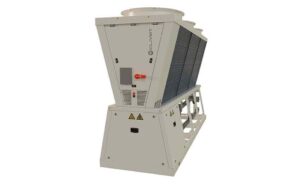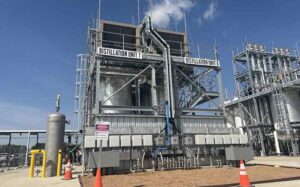Supermarkets promise 80% gas emission cut
30th January 2014 UK: The UK’s leading supermarkets have pledged to reduce emissions from refrigeration gases by 80% by 2020, it was revealed in a new report published yesterday.
UK: The UK’s leading supermarkets have pledged to reduce emissions from refrigeration gases by 80% by 2020, it was revealed in a new report published yesterday.
The announcement was one of a broad range of commitments made by members of the British Retail Consortium (BRC) signed up to new targets as part of its Better Retailing Climate initiative.
The report shows that the 25 signatories, who represent half of UK retail by turnover, exceeded all their targets for reducing waste, energy and water usage up to 2013. The supermarkets pledged to the initiative – Asda, M&S, Morrisons, Sainsbury’s, Tesco, The Co-operative and Waitrose – also managed to reduce emissions from refrigeration by 55%, beating their 50% target (relative to floor space to allow for business growth).
The new report sets ambitious and challenging environmental targets including cutting food wastage and reducing still further the amount of waste sent to landfill. Signatories also pledged to reduce emissions from refrigeration gases by 80% by 2020, relative to floor space. In line with targets already set under their Consumer Goods Forum Commitment, the same supermarkets also made the far less specific pledge “to begin phasing out HFC refrigerants by 2015 and replace them with non-HFC refrigerants.”
Although pledged to switch to “natural” refrigerants in advance of pending revisions of the F-gas directive, the supermarkets added the caveat “We support development of EU regulation to address the use of HFCs, but it is critical that the availability of proven alternative technologies is taken into account.”
The latest report also outlines some of the successes achieved by its supermarket members.
M&S reduced its refrigerant leak rates down to 15%. Committed to installing low GWP systems in all new and refurbished store, M&S is also said to have replaced all its existing high GWP HFC gases with R407A, resulting in a 60% reduction in CO2e emissions or nearly 70% when adjusted for growth in store space.
Maintaining that environmentally acceptable refrigeration shouldn’t be judged purely in terms of moving away from HFCs and that keeping the refrigerant properly contained is key, Asda reduced its gas leak rate to 7.5% in 2013 and just 2.6% in new stores.
Tesco has also made significant progress in reducing its emissions from refrigeration. At the end of 2012/13, its absolute emissions from refrigerant gases were 16% lower than in 2006/7, despite an 84% increase in store space.
The Co-operative aims to reduce the greenhouse gases from its operations by 50% by 2020 and has already achieved an absolute reduction of 43% since 2006. In 2011, the installation of doors on fridges was trialled in a number of its food stores, demonstrating savings of around 20% of the total energy used in each store. Employee and customer feedback is said to have been positive, with both enjoying the more pleasant in-store temperature. The LED lighting used within the fridge doors is also said to create a premium feel compared to traditional fridge lighting. Following the success of the trial, 298 of The Co-operative Food’s stores now have doors on their refrigerators, and this will be rolled out to 2,000 stores by 2020.







